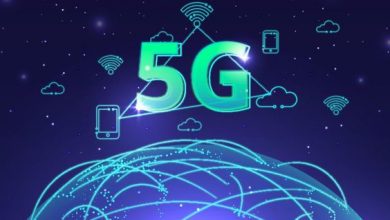Evolution of 5G And It’s Safety Impact

The evolution of 5G has a lot to provide the public-safety community. With its greater capacity, faster speeds, ultra-low latencies, and advanced support for IoT, 5G will enable massive adoption of new public safety applications.
These will contain field delivery of telemedicine, remote-controlled devices, and improved situational awareness with the help of video and drone analytics complementing current LTE/4.9G mission-critical networks.
In expectancy of this brand new technology, and to prepare for how they will deploy it, organizations of public-safety need to have a clear strategy for transitioning to full 5G capabilities.
This needs the understanding of how the 5G standard is evolving and when it will going to make the sense to adopt it for the use of increased public safety.
Traditionally, public-safety networks have depended on narrowband mobile private radio systems such as Project 25 and TETRA and for mission-critical communications.
Such systems will continue to be an essential part of public safety services, but they can also lack the ability to handle vast amounts of data and multimedia.
Knowing these limitations, many public-safety networks have unified mobile broadband into their communications toolkit.
As part of this, networks already have taken a big step forward towards most public-safety agencies.
LTE is a mature technology which is used for a long time in public mobile networks worldwide.
It provides high levels of security and reliability features needed for public-safety use.
It also provides multimedia and data capabilities like real-time body-worn camera streaming, push-to-video, database access, and bio-vital sign monitoring as well as supporting applications, like push-to-talk services.
In regards to the evolution of 5G, the group that sets the 5G standard is the 3GPP.
As the 5G standard develops, the specifications that tailor it to meet the demanding needs of specific public-safety applications.
The transition to 5G will serial in the coming decade, starting with the deployment of 5G hotspots to enhance mission-critical LTE/4.9G ability in particular locations.
But with its capability of reliability and the low-latency needs for critical communications of the future, eventually, 5G will become the de facto standard in the longer term.
Standout 5G features
In terms of wireless radio technology, the most essntial improvement on the wireless front is the 5G New Radio standard, which provides the widest range of usable radio spectrum.
The greater bandwidths support vast capacities, and the lower bandwidths with greater range.
For instance, the millimeter-wave spectrum, which is above 20 GHz and higher than current frequencies, supports high bandwidth with reformed ability and speeds and operating locally using small cells.
Also, 5G radios use a reformed version of MIMO, a multi-antenna system which uses nearly 16 or more antennas for transmit and receive streams at the same time, that is what makes 5G to achieve gigabit peak data rates that will help in gaining high-definition video.
When paired with some of IP-optical backhaul networks, it will also lower the latency to 1ms or less, which is crucial for machine-to-machine communications and automation.
These rediced latencies will improve the responsiveness of remote-controlled devices, like drones and robots by using haptic/tactile feedback, being used for executing tasks and situational awareness in areas posing danger or out of immediate reach to first responders.

Benefits of network slicing
5G has been finally build for network slicing.
It means that the similar network infrastructure can give end-to-end, separate virtual networks at the same time, each with various performance specifications.
This will permit public-safety networks to run on public 5G mobile networks using secure mobile virtual network model views that have already been developed for LTE.
Public-safety networks are mission-critical that the idea of sharing them with other verticals has met with some hesitancy.
Thus LTE introduced the first implementation of slicing, it happens inherent and more adaptive in 5G.
For example, slicing makes public-safety applications to be separately configured, offering quality of service parameters to handle push-to-video and push-to-talk mission-critical communications.
There is no possibility that virtual network or other applications users can affect the performance of the public-safety network slice or compromise its security.
The value of slicing is also evident in the example of emergency field network deployments, where public authorities set up a temporary network to offer connectivity to first responders in an area impacted by a natural disaster.
Here, several agencies can share various slices of the temporary network.
Temporary public internet services, or even local administration communications, can be provided alongside mission-critical communications without affecting either reliability or the security of the public-safety slice of the network.
A work in progress
The procedure of 5G is being made available is with a series of 3GPP releases.
There are 3 releases of the 5G standard that has features of most interest to public-safety users.
The current release is Release 15, and it supports extreme mobile broadband, that is of most interest to consumer mobile smartphone users.
It offers them improved video support, as well as enabling virtual and augmented reality.
While the Sendai City test was supported by a private LTE/4.9G network, 5G will expand the number of cameras that can be deployed as well as higher resolution imagery.
Remote control of drones or unmanned vehicles will also be much improved by 5G’s low latencies, permiting haptic feedback to the remote operator.
The vast broadband aspect of 5G also permits the implementation of self-backhauling for deployable solutions that are rolled out in areas with no coverage.
Drones can be used to depend such temporary backhauling.
Such self-backhauling is known as integrated access and backhaul (IAB).
Another one is Release 16 feature set that will link vehicles and field operators with hospitals to give telemedicine support.
Low-latency and ultra-reliable communications will gain patient monitoring and diagnosis in support of paramedics.
Even it is possible that it will make remote field surgery using very high-definition video and precise haptic feedback to aid the remote surgeon.
Along with this, 5G’s support for vehicle-to-everything communications is intended to support autonomous vehicle applications.
For public safety, it means automated vehicles can be used for fuel, to deliver food, and logistics for intervention in disaster-stricken areas.
It also permits vehicles to connect to road infrastructure, so other drivers can be alerted to dangers at junctions and avoid collisions when ambulance and fire trucks exceed urban speed limits during emergencies.




